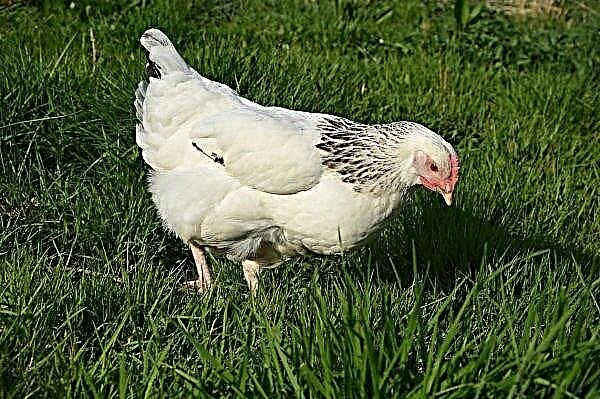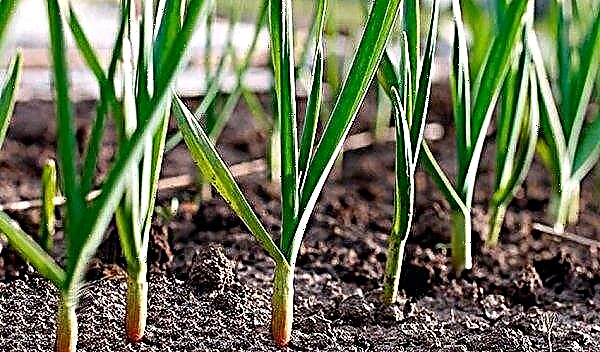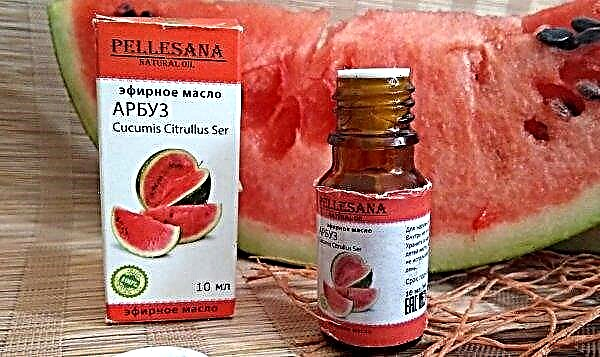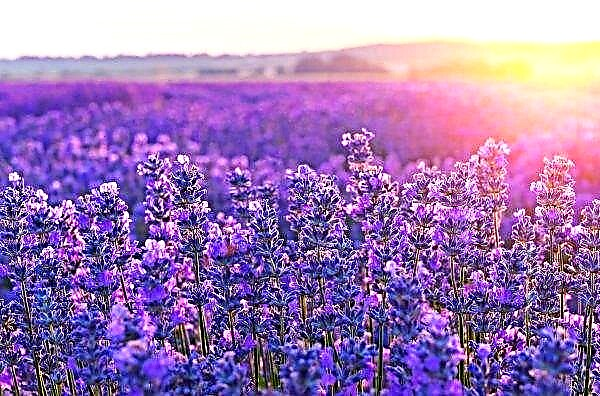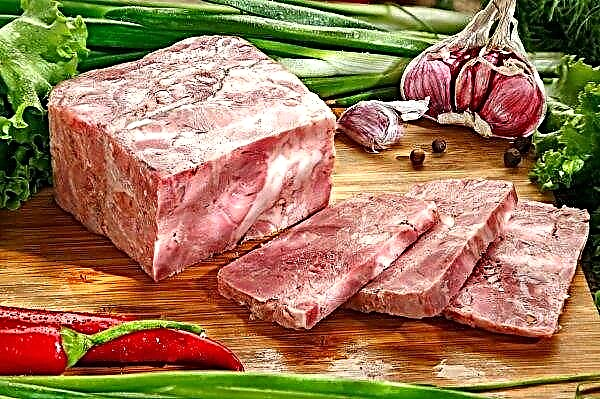Any lover of forest mushrooms knows how delicious fried chanterelles are. But the fact that these gifts of wildlife can bring people not only pleasure, but also benefits, is probably known to few. All the details about the amazing healing properties of chanterelles are given below in the article.
The nutritional value
Chanterelle family (Latin name - Cantharellaceae) includes about a hundred different types of mushrooms, but the most delicious and valuable of them is the species Chanterelle vulgaris, or real, which is sometimes called the Cockerel for its characteristic color. It is about this fungus that will be discussed.

By caloric content, Males are comparable to champignons and honey agarics, but are significantly inferior to ceps, oyster mushrooms and boletus: 100 g of raw product contains about 19 kcal.
The most important nutrients in the chemical composition of chanterelles are distributed as follows:
- proteins - 1.5 g;
- fats - 1.1 g;
- carbohydrates - 1 g.
The bulk of the mushroom pulp (approximately 89 g per 100 g) - this is water, the remaining 7 g are presented in the form of dietary fiber, which, unlike carbohydrates, is absorbed not in the small, but in the large intestine and, accordingly, play an important role not only in providing the human body with the energy necessary for his vital activity, but in improving intestinal motility and improving its natural microflora.
Did you know? Contrary to popular belief, the name of the fungus is not directly related to the well-known forest predator, although these words have common roots. The fact is that the bright yellow color in the Old Slavonic language was called “fox” - hence, the fox and the fox, respectively.
Vitamins and Minerals
In addition to low calorie content and the presence of coarse fiber in the composition, chanterelles can be a source of a number of vitamins and minerals.
In particular, in the pulp of mushrooms found:
- retinol equivalent and beta carotene (precursor of vitamin A), water-soluble vitamins - thiamine, riboflavin, pyridoxine, niacin, pantothenic, folic, nicotinic acid; vitamin C, fat-soluble vitamins - calciferol (vitamin D2), tocopherol (vitamin E);
- macrocells (listed in decreasing order of proportion in chemical composition): potassium, phosphorus, sulfur, chlorine, magnesium, calcium, sodium;
- trace elements (in the same order): aluminum, zinc, copper, titanium, strontium, iron, manganese, fluorine, chromium, nickel, cobalt, vanadium, selenium, lithium.
Did you know? By the content of vitamin A, chanterelles are even ahead of carrots, it is a high percentage of carotene that provides the mushrooms with a characteristic bright orange color.
The amino acid composition of chanterelles is not very rich (although a small amount of at least eight essential amino acids are found in them), but fatty acids are present in the product, including:
- saturated - stearic, palmitic and stearic;
- monounsaturated, including Omega 9 (oleic);
- polyunsaturated, among which are very valuable Omega 6.
Useful properties of chanterelles
The rich vitamin and mineral composition of chanterelles makes this product quite beneficial for the body. However, the same can be said of many other mushrooms. The uniqueness of these mushrooms lies in the fact that in certain cases they can become a real medicine, which has long been successfully used not only by traditional healers, but also by representatives of traditional medicine.

Medical
Mushroom pickers have long noticed that chanterelles are almost never wormy, which, by the way, makes these mushrooms especially valuable for lovers of quiet hunting. Until recently, this phenomenon was only surprising, but today its cause is revealed.
Important! A substance that discourages all kinds of parasites from the desire to enjoy the fragrant flesh of chanterelles is called hinomannosa.
Surprisingly, for the human body, this polysaccharide is completely harmless, but it acts detrimental on arthropods and insects, and not only on adults, but also on eggs and larvae. For this reason, there are even special anthelmintic drugs based on the extract of Cantharellaceae. Such drugs are produced in capsules and are called absolutely unpretentiously - “Chanterelles”.

Thus, it is possible to fight worms with the help of natural forest mushrooms, without going to the pharmacy for expensive medicine. However, it is important to keep in mind that chinomannose (another name for the substance is chitinmannosis) has the property to decompose even with slight heating (up to + 50 ° C), therefore, the method of preparing chanterelles is important for the treatment of parasitic diseases.
Hot and even cold salting also does not allow preserving a useful polysaccharide (in the latter case, its destruction occurs under the influence of sodium salt), therefore, the best option is this drying and subsequent insisting on the resulting material of alcohol, vodka or wine.
Did you know? The largest living creature in the world is not a blue whale, as is commonly believed, but a mushroom. In the Guinness Book of Records, mushroom mushroom Armillaria ostoyae is recorded, covering an area of almost 900 hectares and weighing more than 10 thousand tons (for comparison: the maximum weight of a blue whale is only 150 tons).
However, the benefits of chanterelles are not limited to anthelmintic properties. These mushrooms can be used to treat many other diseases and pathological conditions, including:
| The healing property of chanterelles | Effect agent |
| Antioxidant, excretion of salts of heavy metals | Copper, zinc |
| Antibacterial effect (fungi, in particular, are widely used as a prophylactic and therapeutic agent for tuberculosis and tonsillitis, since they block the development of pathogens of these diseases) | Ergosterol Vitamin D |
| Beneficial effect on the liver (even used in complex therapy for the treatment of hepatitis, hemangiomas of the liver and other serious pathologies) | Trametonolinic acid, ergosterol |
| Treatment of various kinds of kidney pathologies | Ergosterol |
| Increase of working capacity, removal of the syndrome of increased fatigue, improvement of mood, strengthening of memory, general stimulation of the nervous system | B vitamins, magnesium |
| Preservation of visual acuity (in some countries it is used in the treatment of night blindness) | Vitamin A |
The complex effect of biologically active substances contained in the mushrooms provides, in addition to the above, the following positive effect from their proper use:
- restoration of the pancreas;
- anticarcinogenic (anticancer) properties, in particular, expressed in the destruction of atypical cells and blocking the conversion of healthy cells to mutant;
- relief of inflammatory processes;
- healing of wounds, boils, abscesses, including purulent;
- antifungal (fungicidal) properties;
- antihistamine (anti-allergenic) effect;
- mild sedation, elimination of insomnia;
- improvement of the respiratory system (indicated for bronchitis, pneumonia and other diseases of the upper and lower respiratory tract);
- strengthening the heart muscle, preventing myocardial hypoxia and heart failure, lowering blood pressure, preventing atherosclerosis and other pathologies of the cardiovascular system;
- stimulation of the immune system.
 The immunomodulatory properties of chanterelles are quite active, and therefore these fungi are especially shown not only with weakened immunity, but also with various kinds of autoimmune abnormalities (including allergies).
The immunomodulatory properties of chanterelles are quite active, and therefore these fungi are especially shown not only with weakened immunity, but also with various kinds of autoimmune abnormalities (including allergies).
For weight loss
One of the important properties of ergosterol in chanterelles is the stimulation of the production of liver enzymes. Vitamins, minerals, fatty acids and other nutrients that are rich in mushrooms help to improve carbohydrate and fat metabolism, better breakdown of fats and elimination of toxins from the body, as well as lowering the level of "bad" cholesterol in the blood.
Important! For weight loss, mushrooms can be consumed only in boiled or stewed form. Fried chanterelles as a dietary dish can not be considered, in this case, the anticarcinogenic properties of mushrooms are significantly reduced.
The high content of coarse fiber provides an improvement in bowel function, allows you to fight constipation, as a result, digestion is stimulated. All this together makes chanterelles a healthy food product and even allows you to use them as a remedy for obesity and the fight against excess weight.
In addition, chanterelles prevent fatty degeneration of the liver, prolong and enhance the action of insulin, increase the sensitivity of the body to this hormone, which is an occasion to pay attention to this product not only to people who are prone to fullness, but also to patients with diabetes mellitus (primarily an insulin-independent form of this disease )

Cosmetology
The beneficial properties of chanterelles have found their application even in cosmetology. Powder prepared by grinding pre-dried mushrooms is commonly used in this area. From such raw materials, you can make various masks and other means for caring for the face, hair, hands, nails and skin in general.
- Such drugs have a whole range of useful properties:
- rejuvenate;
- soften;
- refresh;
- moisturize;
- nourish;
- tone up;
- tighten.
Did you know? In Russia and most European countries, chanterelles grow quite small: the diameter of their hats is from 2 to 8 cm, their average weight is 8–10 g, and the maximum is 25 g. But in the state of California, mushrooms of this species can reach 0.5 kg and even more!
If desired, fresh mushrooms can also be used as the basis for cosmetic preparations. They are washed, crushed using a blender or a meat grinder and mixed with other components provided by the recipe depending on the desired effect - sour cream, honey, egg yolk (protein), vegetable oil, oatmeal, lemon juice, etc.
Harm and contraindications
There are not so many cases when the use of chanterelles should be completely abandoned, and, as a rule, such restrictions apply to any forest mushrooms.
- In particular, a direct contraindication to the use of the product are:
- pregnancy;
- children's age (up to 3 years);
- individual intolerance (allergic reaction) to any of the substances that make up the fungus;
- acute gastrointestinal diseases - gastritis, pancreatitis, ulcer, colitis, etc. (in this state, coarse fiber is too heavy food, and the patient's menu should be selected with special care and mainly consist only of semi-liquid viscous porridges).

Caution is needed for forest mushrooms to people who have problems with the gallbladder. Nutritionists also do not recommend eating such food at night. A controversial issue is the compatibility of fungi with the period of breastfeeding. Modern medicine comes to the fact that the nutrition of a nursing mother contains much less restrictions than previously thought.
Therefore, in general, it is most likely that if a woman eats some chanterelles (even fried) during lactation, there will be no harm from this to the child. But only if the mushrooms are fresh, high-quality and proven. If you have any doubts about any of these parameters, it is better not to risk it. In general, the main danger of chanterelles consists precisely in the fact that not everyone knows how to correctly recognize them.
Important! In a large family of chanterelles, poisonous mushrooms are absent, however, there are so-called doubles. For example, Omphalotus oleifera is very similar to chanterelle - a mushroom that can cause very severe disorders of the gastrointestinal tract (fortunately, with timely medical help, they are not fatal).
Often, inexperienced mushroom pickers confuse chanterelles with talkers, false chanterelles, as well as other inedible or conditionally edible mushrooms, including those belonging to the chanterelle family. Therefore, in order not to harm your health, chanterelles need to be chosen correctly.
Recommendations for the selection and storage of chanterelles
There is a golden rule in the craft of “silent hunting”: any doubts, even minimal ones, are a reason to refuse to send the mushroom to your basket. An even more reliable way not to make a mistake with the choice of chanterelles is to purchase them in supermarkets, where freshly frozen mushrooms of this species are found quite often.
Buying forest crops from roadside merchants is a rather dangerous undertaking: on the one hand, there is no guarantee that the seller is a good specialist in his own business, on the other hand, mushrooms should be collected only in ecologically clean areas, otherwise, by pulling in industrial waste and other hazardous chemicals like a sponge, they are quite can become deadly poisonous regardless of their species.

But if, resting somewhere in the Carpathians, tourists decide to purchase mushrooms salted or dried by them from local residents, this can be done. True, it would be better if the buyer still has a detailed idea of how to distinguish edible chanterelles from their counterparts.
Important! Externally, chanterelles can retain a fresh look for up to five days if they are placed in a cellar or refrigerator, however, all of the above healing properties begin to gradually disappear within five hours after collection.
To do this, just remember a few rules. The main features of this fox are:
- uniformly yellow color (bright orange, reddish-copper or, conversely, a pale and slurred color - an occasion to suspect a "double");
- not even, but as if with a lace, wavy hat;
- yellow plates (for false chanterelles they are white);
- white flesh (color difference between the inner and outer part of the fungus is a good criterion for making a decision);
- a thick leg without a cavity inside;
- characteristic smell - very pleasant, with notes of wood or fruit;
- the absence of damage from parasites (orange talkers, on the contrary, may well turn out to be worms), as well as rotten or dried specimens - a noble mushroom in adverse conditions simply stops growing, but never spoils;
- dense, not fragile structure.
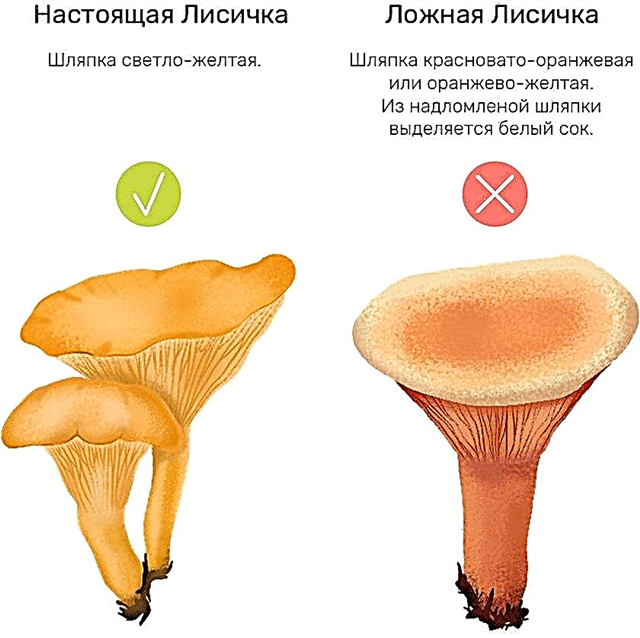
If you want to collect the mushrooms discovered in the forest on your own, you need to know that the chanterelles prefer to grow on moss-covered ground in groups. A single mushroom found in the forest is most likely not a chanterelle. The forest can be either coniferous or mixed; from deciduous trees, the mushroom "gets along" with birch, beech or oak.
Ripening period - from late August to mid-autumn. But, in spite of the foregoing, the harvest brought from the forest should not be stored for a long time. In order to prevent the conversion of a useful product into a useless one, mushrooms must be processed as quickly as possible, and if this is not possible, they should be dried or frozen.
 To the numerous advantages of chanterelles, it should also be added that, due to their density and the absence of voids inside the leg, these mushrooms practically do not crumble during the collection and transportation, even if they are slightly pressed down, placing them in bulk buckets or baskets.
To the numerous advantages of chanterelles, it should also be added that, due to their density and the absence of voids inside the leg, these mushrooms practically do not crumble during the collection and transportation, even if they are slightly pressed down, placing them in bulk buckets or baskets.
Chanterelles are one of the most useful forest mushrooms. With their help, it is possible to prevent the development of many diseases (including cancer), get rid of worms, prolong youth and make the waist thinner. However, do not forget that with all the healing properties and a limited list of contraindications, eating only fresh mushrooms collected by an experienced specialist in a deep forest, away from roads, industrial zones and other ecologically questionable regions.

